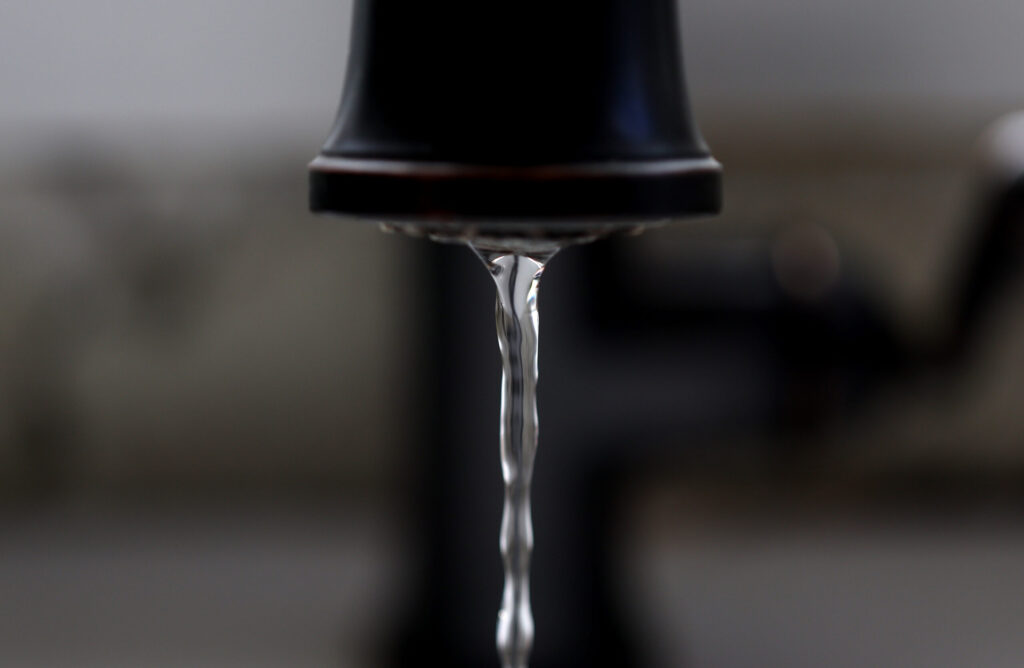
The city of Salem, W.Va., was fined $25,000 for violations of the Clean Water Act occurring at its wastewater treatment plant between 2019 and 2023. Salem Mayor Brandie Garner said that the $25,000 fine was paid to the EPA in July.
(Photo Illustration by Justin Sullivan | Getty Images)
A consent agreement and order was released by the federal Environmental Protection Agency this week showing that the city of Salem, West Virginia in Harrison County, was fined $25,000 for violations of the Clean Water Act occurring at its wastewater treatment plant.
There were 91 violations total that occurred between April 2019 and December 2023. They were levied for the wastewater system not complying with its permits from the National Pollutant Discharge Elimination System and discharging more pollutants than allowed into local waterways, according to the order.
Salem Mayor Brandie Garner said in an interview Tuesday that the $25,000 fine was paid to the EPA in July. She believes a change in personnel both at the city and the EPA led to the publishing of the consent agreement and order being delayed until this week.
“We’re in a good place and we’ve already paid the fine,” Garner said. “This isn’t something that we’ve waited to start addressing, we’ve been addressing it … We know that there are issues that we need to get taken care of and we’ve addressed all the things listed in the consent order.”
According to the order, pollutants being discharged by the Salem wastewater treatment plant above allowable levels include ammonia, copper and fecal coliform, which is bacteria found in the waste of humans and other animals. These pollutants and others listed in the report are commonly and naturally occurring or produced during the treatment process for wastewater, but that treatment process should diminish their presence to the allowable levels.
The Salem wastewater treatment plant discharges into Salem Fork, which is a tributary for the Monongahela River.
NPDES permits are granted through the state Department of Environmental Protection allow some facilities — water and wastewater treatment plants, mining operations, factories, farms and more — to discharge some pollutants into the water as a means of operating, up to a certain level. Those pollutants are tracked and monitored, and anything that comes in above the allowable limits are considered violations that could cause potential harm to the environment as well as public health.
Part of the challenge in meeting the standards allowed by Salem’s NPDES permit, Garner said, is that the allowances in the permit are based on outdated information.
“We have a university here and also have a regional corrections facility,” Garner said. “Before those both started, we were operating at a much smaller population. That population has changed tremendously and that makes it hard to stay in the restrictions at times.”
A factor for the violations levied against Salem is its sewage system’s inflow and infiltration — commonly referred to as I&I — rate. Inflow and infiltration refers to groundwater and stormwater that enter a sewage system outside of official connections like homes, businesses and more. That infiltration from other water sources makes it more difficult and costly to treat wastewater properly and can sometimes lead to overflows in the system while also allowing pollutants to enter into discharge areas.
According to the 2023 annual report for Salem’s sewage system, nearly 85% of the gallons of wastewater it treated last year were from inflow and infiltration instead of gallons of wastewater billed to and originating from the system’s customers.
These issues are common across West Virginia, especially in systems with old, outdated infrastructure where cracks in pipes and underground are frequent.
Garner said that’s the case in Salem, where some pipes are still terracotta — a long outdated medium for water infrastructure. The pipes in some places are over 100 years old, Garner said, and while smoke testing has allowed the city to identify where cracks and leaks occur, improvements take time and are costly.
The city, Garner said, is getting ready to start a water project to replace service lines throughout the area. Once that’s completed — hopefully in a few months, she said — a sewage project will start to do the same for the wastewater system. That should reduce some of the factors that led to the violations and decrease the likelihood of similar problems occurring in the future.
“This has kind of been a situation that has been a long time coming,” Garner said. “We’re not happy with it either, and we want to see improvements. We’re moving on ways to reduce our I&I and stay in the guidelines … we don’t want to do anything to harm the environment or health or anything like that, ever.”
GET THE MORNING HEADLINES.

